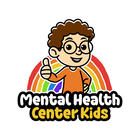|
Key Takeaways:
- When a child goes through something too painful to process, their brain may tuck the memory away — this is known as repressed childhood trauma.
- In adulthood, signs may show up as anxiety, relationship struggles, physical symptoms, or harmful coping behaviors.
- Healing is possible through therapy, especially approaches like CBT or CPT, along with self-care strategies.
|
Our minds can protect us by hiding painful memories, especially from childhood. This is called repression, a coping mechanism that can help us survive difficult times. But even if we can’t remember the trauma, it can still affect us later. Trouble with relationships, anxiety, or feeling stuck may be signs of repressed childhood trauma in adults.
If you’ve ever wondered why certain things bother you more than they should, or why you react strongly to things others don’t, your past might be part of the reason. Understanding these signs can help you start healing.
What is Repressed Childhood Trauma?
Repressed childhood trauma happens when a child goes through something deeply upsetting, like abuse, neglect, bullying, or witnessing violence, and their brain pushes the memory away to protect them. While it may seem helpful in the moment, these hidden memories can cause problems later in life.
According to the Diagnostic and Statistical Manual of Mental Disorders (DSM-IV and V), childhood trauma includes direct experiences of serious harm (like physical or sexual abuse) or witnessing a traumatic event. Learning about something traumatic that happened to someone close can also have an impact [*].
These experiences can lead to serious emotional and mental health struggles such as posttraumatic stress disorder (PTSD), depression, anxiety, or substance use disorders — even if the person doesn’t fully remember what happened.
What Causes Repressed Childhood Trauma?
Many causes of repressed childhood trauma fall under what experts call Adverse Childhood Experiences (ACEs), which happen between the ages of 0 and 17. ACEs include abuse, neglect, and household challenges, such as growing up with a parent who has a mental illness or struggles with addiction [*].
Here are some common causes of repressed childhood trauma:
-
Severe or overwhelming events: These include physical abuse, sexual abuse, neglect, or intense emotional pain that can be too much for a child to process.
-
Ongoing trauma: Long-term situations, like living in a violent home or being bullied for years, can cause the brain to disconnect from what’s happening.
-
Lack of support: This happens when the child feels alone, unheard, or blamed. For example, a child who tells a parent about being bullied at school but is told to “toughen up” or “stop overreacting” may learn to stay quiet and push down their feelings.
-
Betrayal by someone close: When a caregiver or trusted adult is the source of trauma (such as in cases of abuse, neglect, or manipulation), the child may block out or repress the memory as a way to maintain the attachment and feel safe.
-
Young age when it happened: Children who experience trauma very early in life may not have the language or memory skills to fully understand or remember what happened, but their bodies and emotions still carry the impact.
Knowing where repressed childhood trauma comes from can help adults make sense of some of their struggles.
What are the Signs of Repressed Childhood Trauma in Adults?
Repressed trauma doesn’t always look like a clear memory or a specific event. Instead, it often shows up in hidden ways — through emotions, behaviors, physical symptoms, or patterns in relationships.
According to the Substance Abuse and Mental Health Services Administration, “the impact of trauma can be subtle, insidious, or outright destructive.” Because of this, signs of repressed childhood trauma can vary widely from one adult to another [*].
Here are 5 areas where those signs may show up:
Emotional and Behavioral Signs
Adults with repressed childhood trauma can experience mood swings, chronic anxiety, intense anger, or emotional numbness without being able to pinpoint the cause.
These feelings may appear during stressful life transitions, like becoming a parent or starting a new relationship. Such transitions mirror aspects of the original trauma — being vulnerable or having a perceived lack of control.
Physical and Somatic Symptoms
The body can remember what the mind forgets. Trauma that has been repressed can express itself through chronic physical issues. This is especially true when there’s no clear medical explanation. This is known as somatization, where emotional pain gets stored in the body.
Examples of somatic symptoms include:
- Tension headaches
- Back pain
- Stomach issues
- Unexplained fatigue
- Trouble sleeping
- Frequent nightmares
Research shows that the more severe a child’s trauma, the higher their risk of developing physical health problems later in life. This is known as a dose-response relationship, meaning that as trauma increases, so does the risk [*].
Relationship Red Flags
A child who experiences trauma, especially in the form of abuse, neglect, or inconsistent caregiving, can have difficulty forming secure attachments. This can lead to insecure attachment styles (examples are anxious, avoidant, or disorganized), which affect how they relate to others in adulthood.
They may find it hard to set boundaries or get stuck in unhealthy patterns. For example, they might avoid closeness and shut down emotionally when things get too intimate or stay in an emotionally unsafe dynamic to “fix” others.
Cognitive and Memory-Related Cues
Repressed trauma can also affect the way you think or remember things. You might have gaps in your memory or experience a sense of “dissociation” — feeling detached from yourself or your surroundings.
Cognitive issues, such as distorted thinking, may actually help explain how trauma increases the risk of serious mental health problems. Research shows that trauma can change how a person sees and understands the world, which in turn may lead to conditions like psychosis [*].
Coping Behaviors That May Signal Trauma
Some adults cope with unresolved trauma by turning to unhealthy behaviors that help them numb emotional pain. These coping strategies include substance use, overeating, compulsive spending, overworking, or staying in toxic relationships.
People turn to these habits because they offer a quick escape from difficult feelings. Without healthy coping tools, something many trauma survivors never had growing up, it can be hard to manage those emotions.
What to Do If You Recognize These Signs?
Noticing signs of repressed childhood trauma in your adult life is a first step toward healing. The next best step is to seek help from a mental health professional.
A trained therapist can help you understand the root causes of your emotional pain in a supportive space. Therapies such as Cognitive Behavioral Therapy (CBT) and Cognitive Processing Therapy (CPT) are particularly effective in safely revisiting the past and creating healthier responses in the present.
Simple practices like mindfulness, journaling, exercising regularly, and spending time with supportive people are also tools for your healing process. They can be part of your daily routine between therapy sessions.
The Bottom Line
Repressed childhood trauma can leave lasting scars, but healing is possible, and you don’t have to do it alone. It’s never too late to start understanding your past and building a future that feels safe.
If you're a parent, caregiver, or mental health professional supporting a young person, our mental health worksheets for kids and teens can be valuable resources.
References:
- De Bellis, M. D., & AB, A. Z. (2014). “The Biological Effects of Childhood Trauma”. Child and Adolescent Psychiatric Clinics of North America, 23(2), 185. https://doi.org/10.1016/j.chc.2014.01.002
- About adverse childhood experiences. (2024b, October 8). Adverse Childhood Experiences (ACEs). https://www.cdc.gov/aces/about/index.html
- Treatment, C. F. S. A. (2014a). Trauma-Informed care in behavioral health services. NCBI Bookshelf. https://www.ncbi.nlm.nih.gov/books/NBK207201/
- Eilers, H., & Jeronimus, B. F. (2023). Childhood Trauma and Adult Somatic Symptoms. Psychosomatic Medicine, 85(5), 408. https://doi.org/10.1097/PSY.0000000000001208
- Rosa, M., Scassellati, C., & Cattaneo, A. (2023). Association of childhood trauma with cognitive domains in adult patients with mental disorders and in non-clinical populations: A systematic review. Frontiers in Psychology, 14, 1156415. https://doi.org/10.3389/fpsyg.2023.1156415





















































